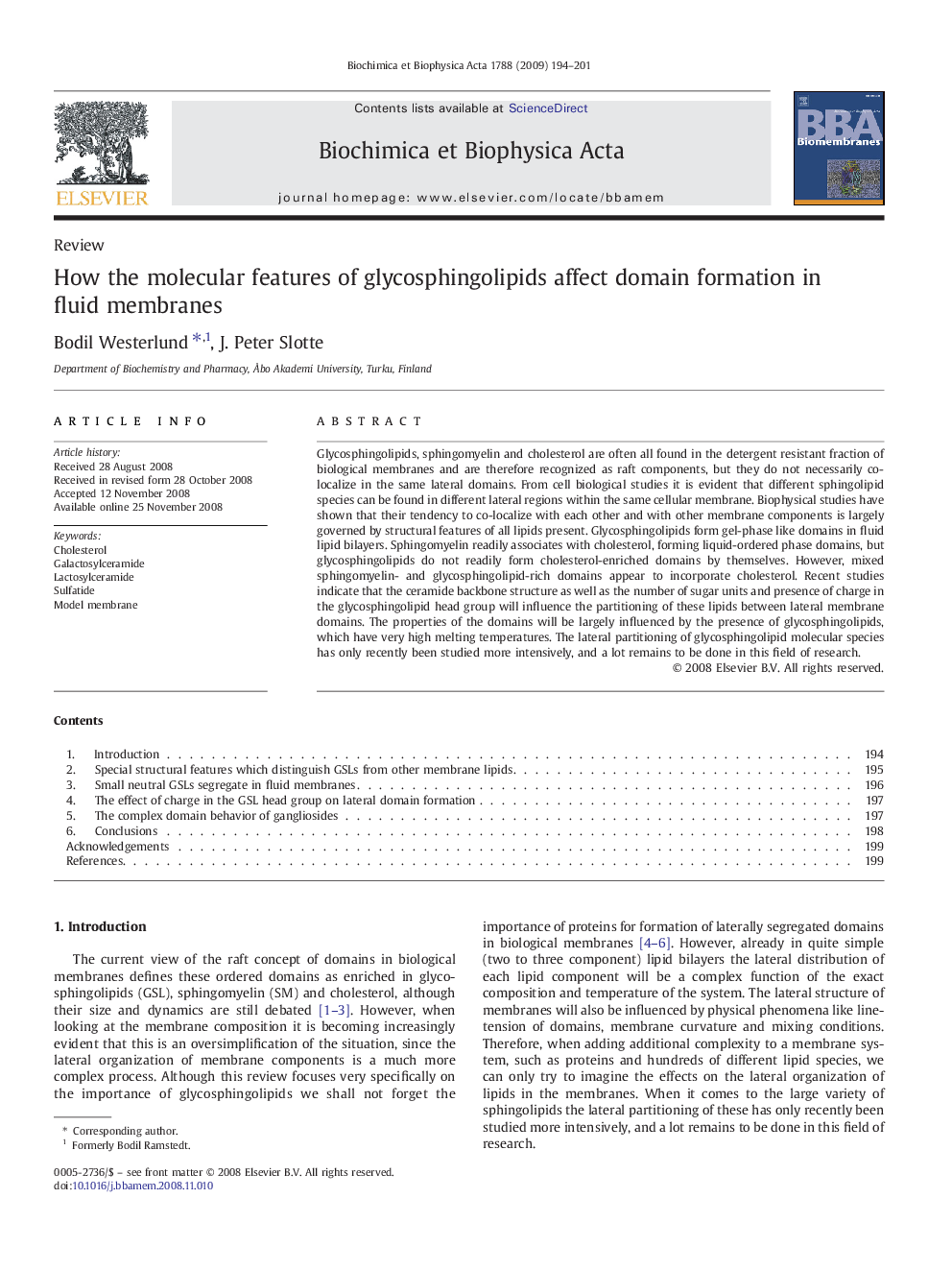| کد مقاله | کد نشریه | سال انتشار | مقاله انگلیسی | نسخه تمام متن |
|---|---|---|---|---|
| 1945058 | 1053250 | 2009 | 8 صفحه PDF | دانلود رایگان |

Glycosphingolipids, sphingomyelin and cholesterol are often all found in the detergent resistant fraction of biological membranes and are therefore recognized as raft components, but they do not necessarily co-localize in the same lateral domains. From cell biological studies it is evident that different sphingolipid species can be found in different lateral regions within the same cellular membrane. Biophysical studies have shown that their tendency to co-localize with each other and with other membrane components is largely governed by structural features of all lipids present. Glycosphingolipids form gel-phase like domains in fluid lipid bilayers. Sphingomyelin readily associates with cholesterol, forming liquid-ordered phase domains, but glycosphingolipids do not readily form cholesterol-enriched domains by themselves. However, mixed sphingomyelin- and glycosphingolipid-rich domains appear to incorporate cholesterol. Recent studies indicate that the ceramide backbone structure as well as the number of sugar units and presence of charge in the glycosphingolipid head group will influence the partitioning of these lipids between lateral membrane domains. The properties of the domains will be largely influenced by the presence of glycosphingolipids, which have very high melting temperatures. The lateral partitioning of glycosphingolipid molecular species has only recently been studied more intensively, and a lot remains to be done in this field of research.
Journal: Biochimica et Biophysica Acta (BBA) - Biomembranes - Volume 1788, Issue 1, January 2009, Pages 194–201